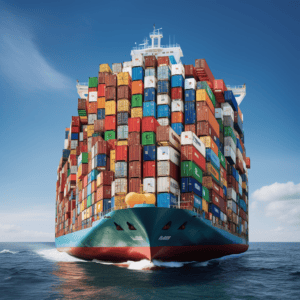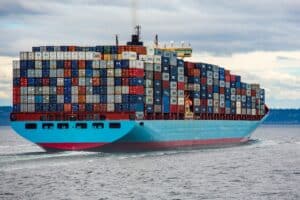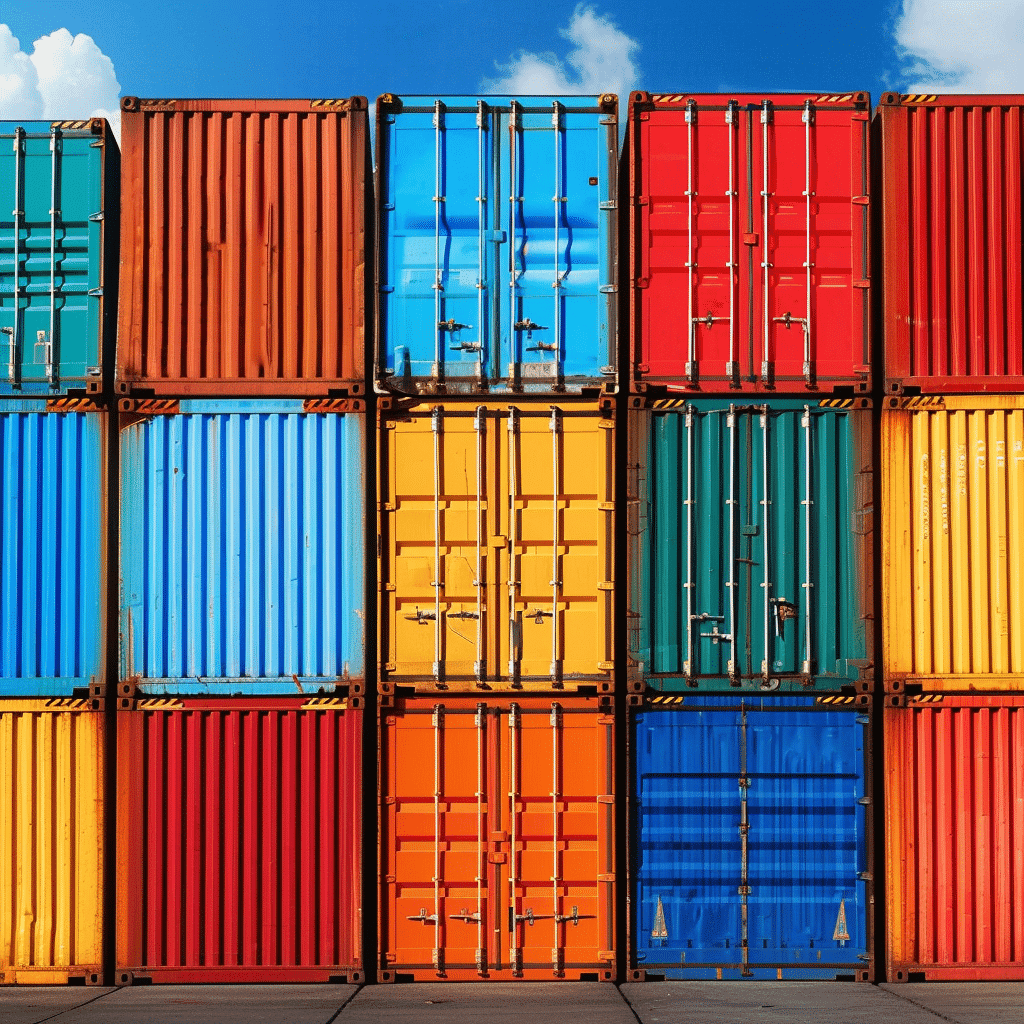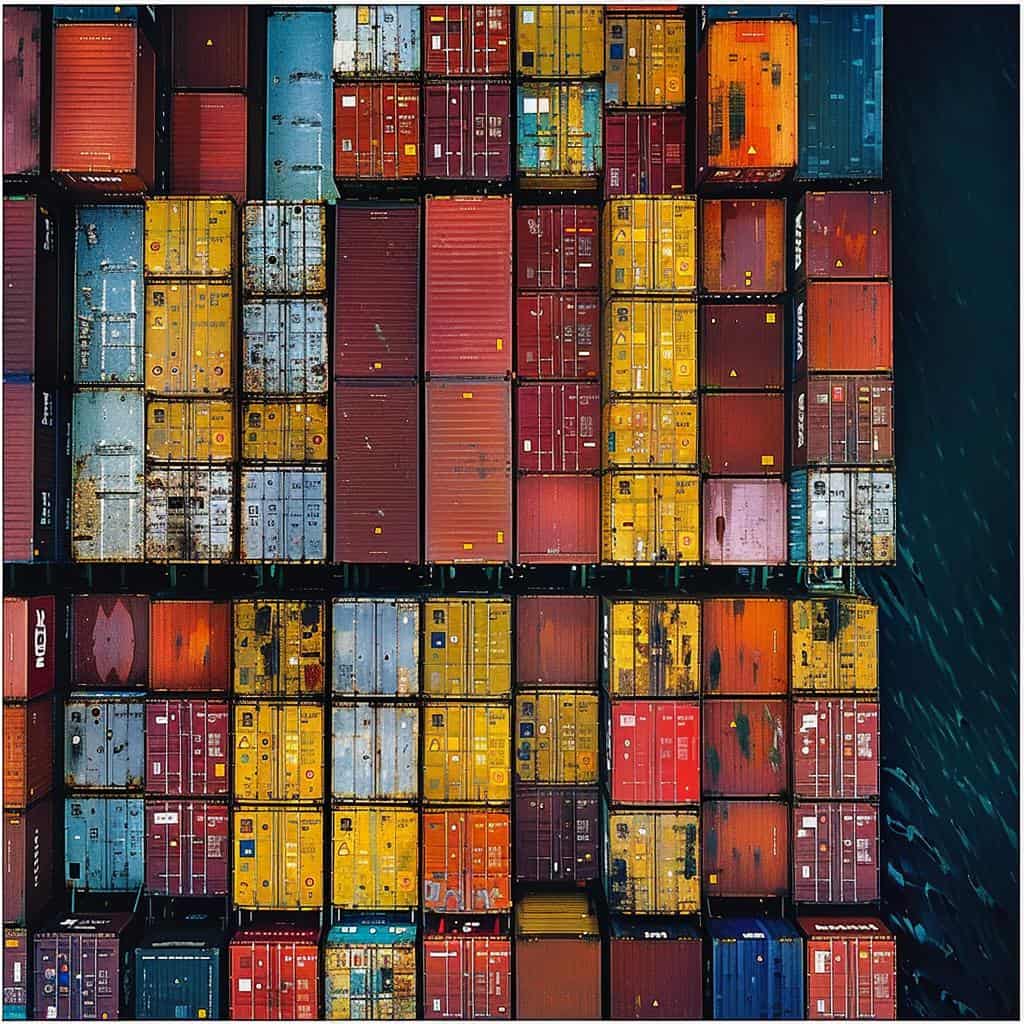How Many Containers on a Container Ship?
Are you curious about how many containers can fit on a container ship? Well, you’ve come to the right place! In this article, we will explore the fascinating world of container ships and uncover the average number of containers they can carry.
Discover the crucial role shipping containers play in international trade and learn about record-breaking vessels and other ships that push the limits of capacity.
Get ready to dive into the evolution of container ship sizes and gain insight into the future of these mighty freight liners.
Introduction to Container Ships
Container ships are large vessels that transport a high number of containers. These massive cargo ships also play a vital role in the shipping industry, enabling the transportation of goods across vast distances.
With their immense size and capacity, container ships can carry an astonishing amount of cargo. The introduction to container ships begins with understanding their purpose: to move containers efficiently and securely from one location to another. These containers come in various shapes and sizes, ranging from 20 feet to 40 feet long.
A typical container ship can carry thousands of these containers stacked on top of each other, maximizing space utilization. In fact, the world record for the largest container ship is held by MSC Irina, which has a staggering capacity of 24,346 twenty-foot equivalent units (TEUs).
Average Number of Containers on a Ship
The number of cargo units typically found on a ship can vary depending on its size and capacity. When it comes to container ships, the average number of containers on a ship is approximately 15,000. This number, however, is not set in stone and may differ based on the type and size of the vessel.
For instance, larger container ships like the Irina and Loreto have a total capacity of up to 24,346 containers. On the other hand, smaller container ships may only be able to hold around 600 containers.
It’s important to note that when we talk about containers in the context of shipping, we often refer to twenty-foot equivalent units (TEUs), which represent the standard size for shipping containers.

Record-Breaking Container Ships
Starting with the Emma Maersk, which held the title of the largest container ship when it was launched in 2006.
Then there’s the MOL Triumph and Madrid Maersk, both briefly claiming the top spot with their impressive capacities.
And let’s not forget about the CMA CGM Antoine de Saint Exupéry and OOCL Hong Kong, two vessels known for their advanced technologies and massive container capacities. See more record-breaking ships below!
Emma Maersk
Built in 2006, the Emma Maersk was one of the largest container ships built in the world at that time. This massive vessel had the capacity to transport around 14,770 TEUs (twenty foot equivalent units), which means it could carry an enormous number of shipping containers.
The Emma Maersk played a significant role in the global shipping industry, as it was able to transport goods and products across vast distances efficiently and effectively. With its impressive size and capacity, this container ship revolutionized the way goods were transported around the world.
The Emma Maersk truly lived up to its title as one of the world’s largest container ships, making a significant impact on international trade and commerce.
MOL Triumph
With its innovative technologies, the MOL Triumph has become a game-changer in the shipping industry. As the largest container ship in the world at the time of its launch, it can carry around 20,170 TEUs (twenty-foot equivalent units) of shipping containers. This mammoth vessel measures an impressive overall length and boasts advanced features like an energy-saving hull design and a hybrid turbocharger system to enhance efficiency.
The MOL Triumph’s capacity to transport such a large number of containers is truly remarkable. Its sister ship, the MOL Tribute, also shares similar capabilities and contributes to the growing fleet of container ships that are revolutionizing global trade by efficiently carrying vast quantities of goods across oceans.
Madrid Maersk
Now, let’s shift our focus to another impressive container ship: the Madrid Maersk. This vessel is part of the Maersk Line fleet, one of the world’s leading shipping companies. With its massive capacity and innovative design, the Madrid Maersk stands out among large container ships.
The Madrid Maersk has a staggering capacity of approximately 20,568 TEUs, meaning it can carry an enormous amount of containers. This makes it ideal for transporting a vast quantity of manufactured goods across the oceans. As a result, ports around the world rely on these large container ships like the Madrid Maersk to handle their cargo efficiently.
Being part of Maersk Line’s fleet, this ship plays a crucial role in global trade by connecting countries and facilitating the movement of goods between them. Its size and efficiency make it an essential asset for both producers and consumers worldwide.
CMA CGM Antoine de Saint Exupéry
You might be amazed by the advanced technologies onboard the CMA CGM Antoine de Saint Exupéry, one of the largest container ships in the world. With a capacity of around 20,954 TEUs, this vessel is a true marvel of modern engineering.
Operated by the French shipping company CMA CGM , it represents their commitment to staying at the forefront of container shipping. As global trade continues to grow and demand for efficient delivery increases, larger container ship sizes have become necessary to meet these requirements.
The CMA CGM Antoine de Saint Exupéry not only meets these demands but also incorporates innovative features like its hybrid scrubber system, which helps reduce fuel consumption and CO2 emissions. This remarkable ship plays a vital role in supporting global trade while minimizing its environmental impact.
OOCL Hong Kong
The OOCL Hong Kong, built in 2017, is currently the largest container ship in the world and incorporates advanced technologies to enhance fuel efficiency. With a container capacity of around 21,413 TEUs, it can transport a massive number of containers across the seas.
This large container ship plays a crucial role in the international shipping industry, allowing shipping companies to move goods efficiently and effectively between ports worldwide. The OOCL Hong Kong’s impressive size and capacity contribute to its significance in maritime executive discussions about global trade and logistics.
Its cutting-edge design and propulsion system make it one of the most fuel-efficient ships of its kind, reducing environmental impact while maintaining high performance standards. As a result, the OOCL Hong Kong continues to revolutionize the container shipping industry with its technological advancements and capabilities.
Evolution of Container Ship Sizes
Imagine how container ship sizes have evolved over time.
One notable example is the MSC Gulsun, which held the title for the largest container ship in the world in 2019. With a capacity of 23,756 twenty-foot equivalent units (TEUs), it surpassed its predecessors and set a new standard for container ship sizes at the time.
Built by Samsung Heavy Industries for Mediterranean Shipping Company (MSC), this massive vessel demonstrated the industry’s continuous drive towards larger and more efficient ships.
Very large container ships like the MSC Gulsun are designed to maximize cargo capacity while minimizing fuel consumption through advanced technologies such as improved hull designs and optimized hatch covers.
As container trade continues to grow, we can expect further advancements in container ship sizes to accommodate greater demands and enhance overall efficiency in global shipping operations.
The current holder as of March 2023 is the MSC Irina 24,346 having been built in 2023.
Impact of Container Standardization
Standardization of container sizes has revolutionized the shipping industry by streamlining logistics and enabling seamless transfer between different modes of transportation. The impact of standardization cannot be overstated.
Before this practice, containers varied in size and shape, making it difficult to efficiently load and unload cargo from ships. However, with the adoption of standardized containers, the process has become much more efficient. Container ships can now carry a larger number of containers, maximizing their capacity and reducing overall shipping costs.
Benefits of Shipping Containers
By implementing standardized containers, companies have been able to significantly improve efficiency in the the shipping container and industry, allowing for seamless transfer of goods between different modes of transportation.
Shipping containers are carried on container ships, which are larger vessels specifically designed to accommodate these containers.
The use of standardized containers enables more containers to be loaded onto each ship, maximizing the use of space and reducing the need for multiple trips. This not only saves fuel but also allows companies to operate on regular schedules, ensuring timely delivery of goods.
Moreover, the standardization of shipping containers provides several other benefits such as increased security and protection for cargo during transit.
With their uniform size and design, shipping containers have revolutionized the logistics industry by providing a reliable and cost-effective solution for transporting goods worldwide.
Standard Sizes and Capacities of Containers on Ships
The standard sizes and capacities of containers on ships have greatly contributed to the efficiency and cost-effectiveness of global trade. The use of standard sizes and capacities is crucial for container ships. These containers allow for easy stacking, loading, and unloading, minimizing time and effort required in handling goods during transit.
The most common container sizes are 20 feet and 40 feet in length, with a capacity ranging from 1,172 cubic feet to over 2,700 cubic feet. By using these standardized container sizes and capacities, shipping companies can maximize space utilization on their vessels while ensuring that goods remain secure during transportation.

Future of Freight Liners
As we look ahead, the future of freight liners appears to be promising. Advancements in technology and increasing demand for efficient transportation are driving the evolution of the container ship industry.
In the future, we can expect to see even larger ships capable of carrying more containers. Thanks to advancements in marine engineering and design, these large ships will not only increase capacity but also reduce fuel consumption and environmental impact. This will be achieved through improved propulsion systems and energy-efficient technologies.
Additionally, freight liners will optimize their routes based on data analysis and real-time information. This will result in reduced transit times and enhanced efficiency.
Overall, the future of freight liners holds great potential for revolutionizing container shipping. It will ensure faster, greener, and more cost-effective transportation of goods across the globe.
FAQ
What Does 24000 Teu Capacity Mean?
A 24,000 TEU capacity refers to the ability of a container ship to carry up to 24,000 twenty-foot equivalent units (TEUs). A TEU is a standard measure of cargo carrying capacity based on the volume of a 20-foot-long intermodal container
How Many Containers Are in the Biggest Ship?
The largest modern container ships can carry up to 24,000 TEU.
How Many 40ft Containers Does a Ship Hold?
The number of 40ft containers a ship can hold depends on how many shipping containers in its total TEU capacity. For instance, a ship with a capacity of 24,000 TEU can theoretically hold up to 12,000 40ft containers, as one 40ft container is equivalent to two TEUs
How Big Is a Container Ship of 500 TEU?
The specific dimensions of a 500 TEU container ship are not provided in the current data. However, container ship capacity is typically measured in twenty-foot equivalent units (TEU). The size of the container ship owned here would depend on its design, length, breadth, and other factors
Conclusion
In conclusion, container ships play a crucial role in facilitating international trade by transporting large quantities of goods across the globe. With the evolution of container ship sizes, there has been a significant increase in the number of containers they can carry. These record-breaking vessels are continuously pushing the limits and revolutionizing the shipping industry.
As we look to the future, it is clear that container ships will continue to evolve and adapt to meet growing demands for global trade. So next time you see a massive cargo ship at port, remember it’s not just one or two containers onboard but thousands!


